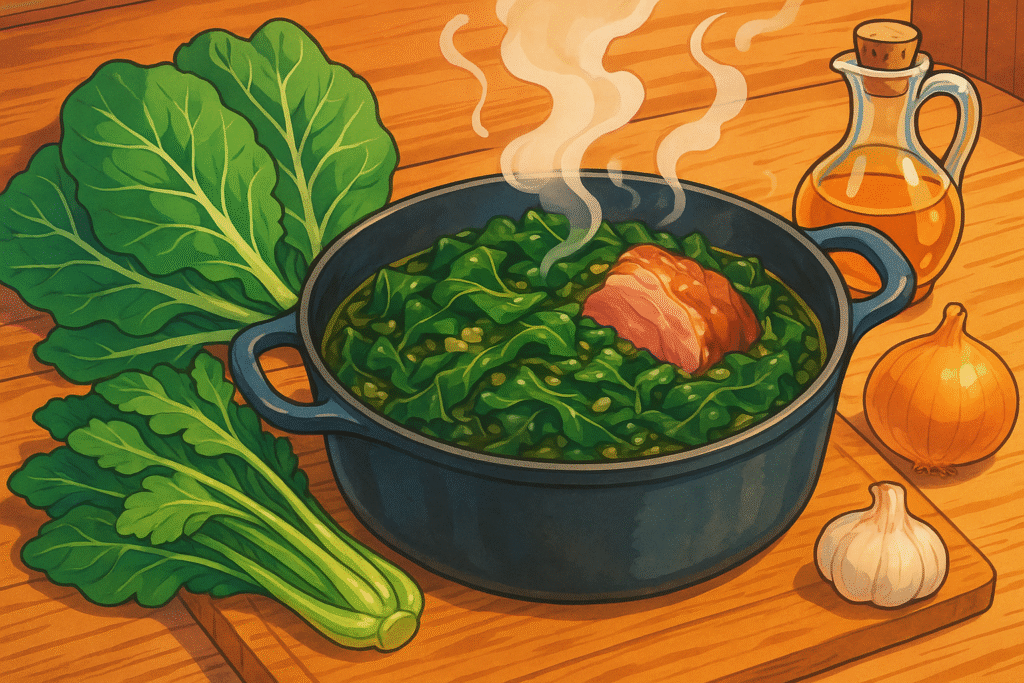Collard Greens (Brassica oleracea var. acephala)

About Collard Greens
Collard greens are large, leafy greens with thick, flat leaves and a deep, earthy flavor. They’re a brassica — related to kale, cabbage, and broccoli — but uniquely robust and meaty when cooked.
Best known for their role in African-American and Southern U.S. cuisine, collards are traditionally braised low and slow with smoked meats or made into tender vegetarian dishes with garlic, oil, and spice.
The History of Collard Greens
Collard greens trace their ancestry to ancient Greece and Rome, but their culinary and cultural significance blossomed in the American South. Enslaved Africans cultivated collards in the 17th–19th centuries, making them a cornerstone of survival and community cooking.
Today, collards remain a staple in Southern cuisine, especially during holidays, Sunday dinners, and New Year’s Day (when they symbolize wealth and prosperity).
The Science of Collard Greens
Collards are packed with vitamins A, C, and K, plus calcium, fiber, and antioxidants like glucosinolates. Their slightly bitter edge is tamed by long cooking, which breaks down tough cell walls and brings out sweetness.
They’re also one of the most calcium-rich leafy greens — especially useful in plant-based diets.
The Geography of Collard Greens
Collards thrive in temperate to warm climates. They’re widely grown across the Southern U.S., especially in Georgia, South Carolina, and North Carolina, but also cultivated in Brazil, Portugal, and parts of East Africa.
In colder regions, a light frost improves their flavor by converting starches into sugars.
Varieties of Collard Greens
Georgia Southern
Classic large-leafed variety with mild flavor and great cold resistance. Standard in U.S. Southern cooking.
Vates
Compact, slow-bolting, and ideal for small gardens. Slightly sweeter with shorter leaves.
Champion
Dense, crinkled leaves and excellent flavor. Good for freezing and long cooking.
Morris Heading
Forms a loose head. Sweeter and more tender — a crossover between collards and cabbage.
Portuguese Couve Galega
Tall, slender-stemmed collard grown for caldo verde soup. Light green and very mild.
FAQs All your questions about Collard Greens: answered
re collards the same as kale?
No, but they’re close relatives. Collards have flatter, tougher leaves and a milder flavor when cooked.
Do collards need to be cooked long?
Traditional recipes call for slow braising, but they can also be sautéed briefly for a firmer bite.
Can you eat collard stems?
Yes — chop and cook them longer than the leaves, or add them to stocks and soups.
Why are collards eaten on New Year’s?
They symbolize money and prosperity, thanks to their leafy green, coin-like appearance.